Zone
Crash of a Cessna 441 Conquest in Greenacres City: 1 killed
Date & Time:
Dec 30, 2003 at 1115 LT
Registration:
N111RC
Survivors:
No
Schedule:
Boca Raton – West Palm Beach
MSN:
441-0188
YOM:
1981
Crew on board:
1
Crew fatalities:
Pax on board:
0
Pax fatalities:
Other fatalities:
Total fatalities:
1
Aircraft flight hours:
4036
Circumstances:
The airplane, flown by an airline transport pilot, departed in day visual meteorological conditions for an 18-nautical mile flight from the home base airport to another airport where the pilot planned to conduct a practice instrument approach. The pilot contacted approach control and requested a practice ILS approach. The controller instructed the pilot to proceed northwest bound and maintain 2,500 feet msl. Radar indicated the airplane tracked a northerly heading instead of a northwesterly heading as instructed. The airplane continued on a northerly heading until 1113:48 when it was about 5 miles southwest of the destination airport at 1,900 feet msl with a ground speed of 172 knots. At this point, the controller instructed the pilot to turn southbound and remain clear of Class C airspace. Radar coverage for the next 50 seconds was intermittent. At 1114:29, radar picked up the airplane about 4 miles southwest of the destination airport at 1,800 feet msl, a ground speed of 106 knots, and a heading of 101 degrees. The airplane continued heading east-southeast for about 30 seconds and its ground speed continued to decay. At 1114:58, it entered an abrupt descent, going from 1700 feet to 200 feet in 15 seconds. The last radar return was recorded at 1115:13 and showed the airplane at 200 feet msl, a ground speed of 64 knots, and a heading of 093 degrees. Several witnesses observed the airplane descend in a "flat spin" and impact a shallow canal in a residential area. Examination of the accident site revealed that the airplane impacted the canal in a nearly flat and level attitude. No evidence of any pre-impact mechanical discrepancies with the airframe or engines was found that would have prevented normal operation. Testing of the electronic engine controls revealed that both units were functional, but under some conditions would trip to manual mode. Further investigation determined that the units tripping to manual mode was due to an electrical overstress that failed the same thermistor within each unit. The reason for the electrical overstress or when it occurred could not be determined; however, it is probable it occurred at impact when the units were submerged in water. Even if the units tripped to manual mode in flight, this would only result in the loss of the torque and temperature limiting and propeller synchrophaser systems, meaning the pilot would have to manually adjust the power levers as required to maintain the proper torque and exhaust gas temperature. Post accident toxicology testing of the pilot's blood revealed chlorpheniramine, an over-the-counter sedating antihistamine, at more than ten times higher than the level expected with a typical maximum over-the-counter dose. It is probable that the pilot's performance and judgment were substantially impaired by his very high blood level of chlorpheniramine.
Probable cause:
The pilot's failure to maintain aircraft control, which resulted in an inadvertent stall/spin and subsequent uncontrolled descent into a canal. A factor was the pilot's impairment by the drug
chlorpheniramine.
chlorpheniramine.
Final Report:
Crash of a Piper PA-61P Aerostar (Ted Smith 601P) in Belle Glade
Date & Time:
Feb 16, 2002 at 0800 LT
Registration:
N715RM
Survivors:
Yes
Schedule:
Boca Raton – Marathon
MSN:
61-0216-024
YOM:
1975
Crew on board:
1
Crew fatalities:
Pax on board:
0
Pax fatalities:
Other fatalities:
Total fatalities:
0
Captain / Total hours on type:
120.00
Aircraft flight hours:
1950
Circumstances:
The pilot was aware of thunderstorms along his route of flight. He paralleled a line of storms for about 20 minutes looking for a hole in the storms to penetrate, without any success. He turned, and climbed to an altitude of 13,500 feet. He noticed what seemed to be an opening to the south, and turned southbound, through the hole, for about 2 or 3 miles, and then the hole closed. He turned the airplane to the right to reverse course, when he inadvertently penetrated a cell. At this point he said he "lost control of the airplane, and was turned upside down…...heading straight down towards the ground...…traveling at a high rate of speed..….the airspeed indicator was pegged." At an altitude of about 2,000 feet, he was able to level the wings, reduce power and raise the nose. He said he was then able to slow the airplane for a "controlled crash landing," straight a head in a sugar cane field. According to the Sheriff's Report, he struck the field in which the aircraft was lying in immediately after slowing the airplane. The distance from the initial impact area to where the airplane came to rest was about 75 yards.
Probable cause:
The pilot continued flight into known adverse weather resulting in a loss of control and subsequent impact with the ground.
Final Report:
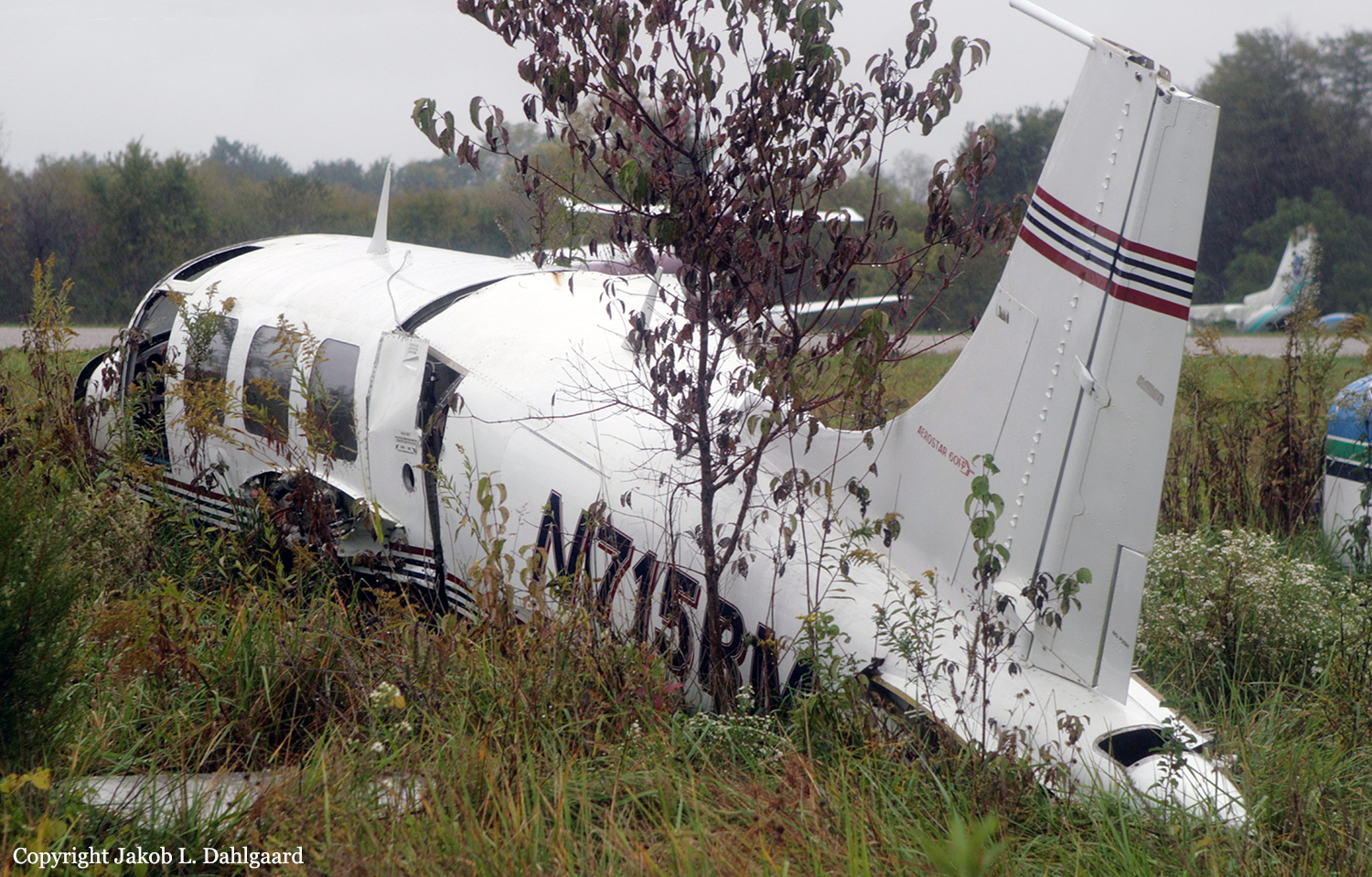
Crash of a Learjet 25B in Pittsburgh: 2 killed
Date & Time:
Nov 22, 2001 at 1305 LT
Registration:
N5UJ
Survivors:
No
Schedule:
Pittsburgh - Boca Raton
MSN:
25-088
YOM:
1972
Crew on board:
2
Crew fatalities:
Pax on board:
0
Pax fatalities:
Other fatalities:
Total fatalities:
2
Captain / Total hours on type:
3030.00
Copilot / Total hours on type:
300
Aircraft flight hours:
10004
Circumstances:
A commercial pilot, who observed the airplane during the takeoff attempt, stated that it used "lots" of runway, and that the nose lifted "too early and way too slow." The airplane "struggled" to get in the air, and it appeared tail heavy, with "extreme" pitch, about 45 degrees nose-up. It also appeared that the only thing keeping the nose up was ground effect. The airplane became airborne for "a very short time," then sank to the ground, and veered off the left side of the runway. The nose was "up" the whole time, the airplane never "rolled off on a wing," and the wings never wobbled. The engines were "really loud," like a "shriek," and engine noise was "continuous until impact." Another witness at a different location confirmed the extreme nose high takeoff attitude and the brief time the airplane was airborne. It seemed odd to him that an airplane with that much power used so much runway. A runway inspection revealed no evidence of foreign objects or aircraft debris. Tire tracks from the airplane's main landing gear veered off the left side of the paved surface, at a 20-degree angle, about 3,645 feet from the runway's approach end. They continued for about 775 feet, then turned back to parallel the runway for another 650 feet, before ending about 50 feet prior to a chain link fence. There was no evidence that the nose wheel was on the ground prior to the fence. The fence, which was about 1,300 feet along the airplane's off-runway ground track and 200 feet to the left of the runway edge stripe, was bent over in the direction of travel. Ground scars began about 150 feet beyond the fence, and the main wreckage came to rest 300 feet beyond the beginning of the ground scars. The first officer advised a witness that he'd be making the takeoff; however, the pilot at the controls during the accident sequence could not be confirmed. When asked prior to the flight if he'd be making a high-performance takeoff, the captain replied that he didn't know. There was no evidence of mechanical malfunction.
Probable cause:
The (undetermined) pilot-at-the-controls' early, and over rotation of the airplane's nose during the takeoff attempt, and his failure to maintain directional control. Also causal, was the captain's inadequate remedial action, both during the takeoff attempt and after the airplane departed the runway.
Final Report:
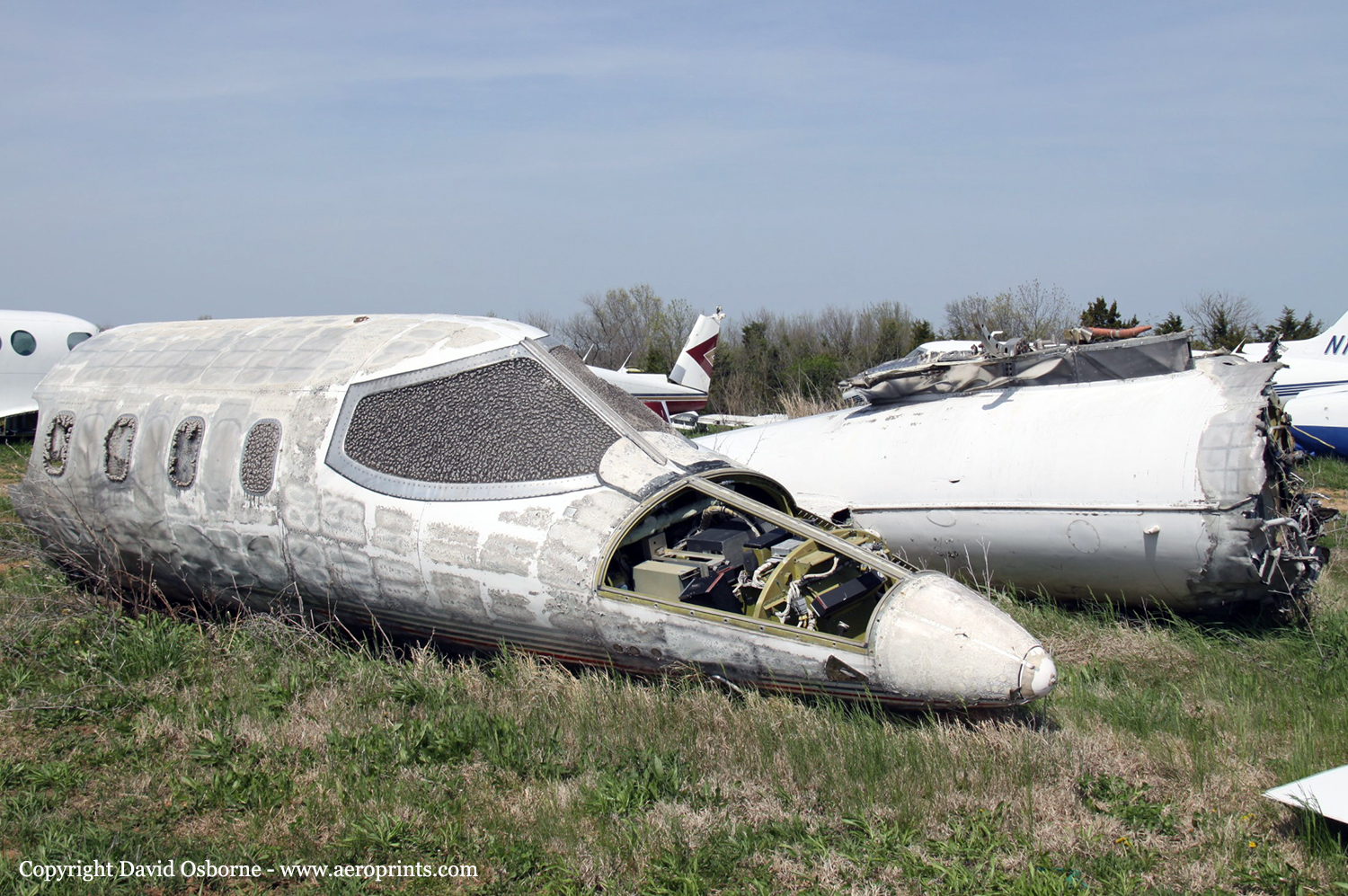
Crash of a Learjet 55 Longhorn in Boca Raton: 3 killed
Date & Time:
Jun 23, 2000 at 1141 LT
Registration:
N220JC
Survivors:
No
Schedule:
Boca Raton - Fort Pierce
MSN:
55-050
YOM:
1982
Crew on board:
2
Crew fatalities:
Pax on board:
1
Pax fatalities:
Other fatalities:
Total fatalities:
3
Aircraft flight hours:
8557
Circumstances:
The Learjet departed from an uncontrolled airport about 2 minutes before the accident on a on a VFR climb and was not talking to ATC. The Extra EA-300S departed VFR from a controlled airport and requested and received a frequency change from the control tower 2 minutes after departure. Review of radar data revealed that the Extra climbed to 2,500 feet on a heading of 346 degrees before descending to 2,400 at 1141:25. The Learjet was observed on radar in a right crosswind departure passing through 700 feet on a heading of 242 degrees at 1141:02. At 1141:16, the Learjet was at 1,400 feet heading 269. At 1141:30, the Extra is observed on radar at 2,400 feet, in a right turn heading 360 degrees. The Learjet is observed on radar at 1141:28 in a climbing left turn passing through 2,300 feet. The last radar return on both aircraft was at 1141:30.
Probable cause:
The failure of the pilot's of both airplanes to maintain a visual lookout (while climbing and maneuvering) resulting in an in-flight collision and subsequent collision with residences and terrain.
Final Report:

Crash of a Beechcraft B90 King Air in West Palm Beach: 8 killed
Date & Time:
Sep 3, 1999 at 0325 LT
Registration:
N338AS
Survivors:
No
Schedule:
Pontiac – Boca Raton
MSN:
LJ-493
YOM:
1970
Crew on board:
1
Crew fatalities:
Pax on board:
7
Pax fatalities:
Other fatalities:
Total fatalities:
8
Captain / Total hours on type:
200.00
Aircraft flight hours:
8832
Circumstances:
At 0314, the pilot reported to the Air Traffic Control (ATC) Tower that he wanted to divert from his destination to land at a closer airport, and was cleared for a visual approach. At 0325, the pilot issued a "Mayday." On final approach the airplane struck a building and wires about 1/2 mile short of the runway. Witnesses that saw the airplane just before impact said that the airplane was low, there was no in-flight fire, and the engine sounds "...appeared to be a fluttering sound as if air [was] passing through the propeller." The pilot had filed for a cruise altitude of 15,000 feet, with a time en route of 5 hours, and fuel on board 6 hours. Weight and balance calculations showed that the pilot was operating about 722 pounds above the maximum gross weight for the takeoff, climb, and maximum cruise power settings. The Pilot Operating Handbook calculations showed that most of the fuel would have been used during the flight. The engine and propeller examinations revealed that both engines were not producing power at impact (windmilling). There were no discrepancies found with the engines or propellers. Examination of the propellers revealed that they were not in the feather position and they were not in beta/reverse position. Line personnel at the departure airport confirmed that all the tanks were topped off (282 gallons added). It took the flight 32 minutes to reach a cruise altitude of 15,000 feet, which calculated to about 293.3 pounds (1 gallon of Jet "A" equals 6.7 pounds), and a flight time of 4.9 hours from takeoff to impact. Sample calculations indicated that the fuel burn rate would have caused the airplane to use 2,649.3 pounds of Jet "A" turbine fuel during the flight. The flight departed with all tanks full 384 gallons usable (2,572.8 pounds), which calculates to insufficient fuel for the completion of the flight. Two gallons of fuel was drained from the right nacelle tank at the crash site, and there was no evidence of in-flight leakage. The sample calculations do not consider performance degradation for operating the airplane above the maximum allowable gross weight, which would cause the fuel consumption to go up because more power was required for the overweight conditions. The pilot's flight plan was for economy cruise, plus the airplane was over gross weight at takeoff, and there are no performance charts for that condition. So, the performance was even poorer than shown on the maximum power chart for climb and cruise. Calculations of the maximum allowable fuel that could be on board the aircraft showed that only 1851 pounds of turbine fuel could be carried to start the flight at the maximum allowable weight, or about 3.2 hours of flight. The en route winds aloft at the airplane's altitude indicated a slight tailwind for half the flight and a headwind of about 15 knots for the remainder of the flight.
Probable cause:
A total loss of engine power due to fuel exhaustion. Contributing factors in this accident were the pilot's operation of the airplane in an overweight condition, inadequate pre-flight and inflight planning.
Final Report:
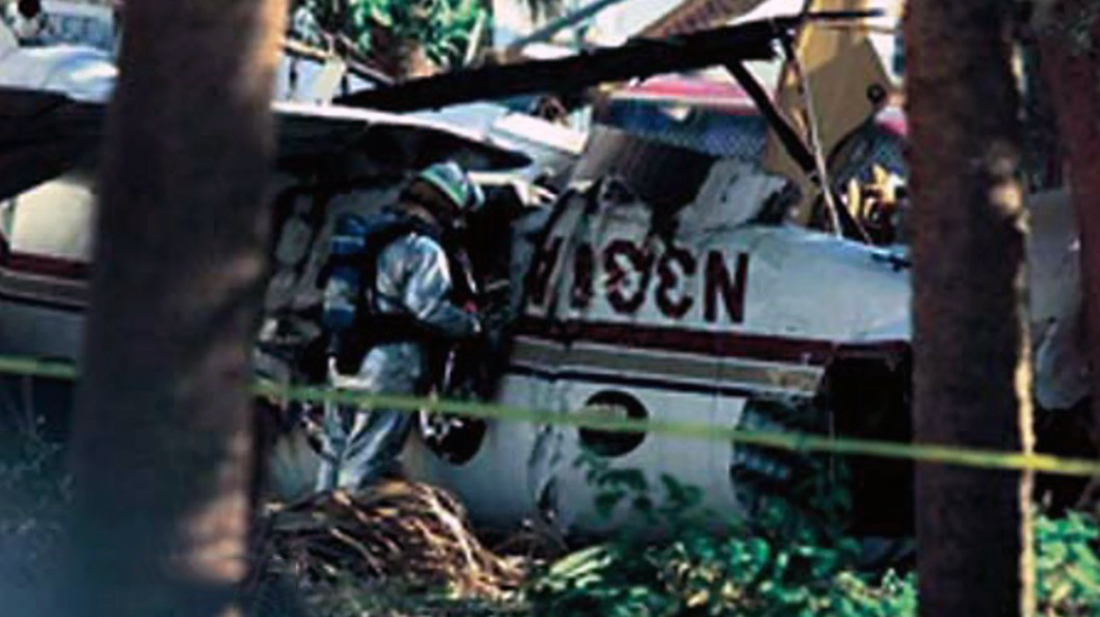
Crash of a Rockwell Gulfstream 695A Jetprop 1000 in Boca Raton: 3 killed
Date & Time:
Jan 21, 1998 at 1534 LT
Registration:
N269M
Survivors:
No
Schedule:
Boca Raton - Lawrenceville
MSN:
695-96098
YOM:
1985
Crew on board:
1
Crew fatalities:
Pax on board:
2
Pax fatalities:
Other fatalities:
Total fatalities:
3
Captain / Total hours on type:
843.00
Aircraft flight hours:
3274
Circumstances:
The pilot had received a weather briefing and was aware of the weather conditions west and north of the airport. The pilot was issued the flight clearance as filed, and was assigned an initial altitude of 2000 feet. Approximately five minutes into the flight, the air traffic controller questioned the pilot concerning the assigned heading. The controller stated that the pilot 'sounded extremely strained' and replied, 'N269M is in trouble.' Radar altitude data showed a rapid loss of altitude for N269M; the last radar altitude data showed the flight at 2800 feet. The airplane collided with the ground in a nose low attitude. Weather radar data from the Miami Weather Surveillance Radar-1988, Doppler (WSR-88D) showed a large, intense convective cell just west of Boca Raton between 1530:15 and 1535:57. Moderate to very heavy rain showers were associated with the convective activity. A review of the radar data showed that N269M was 3.5 to 4.0 miles north of the core of the large convective cell.
Probable cause:
The pilot flew into known convective meteorological conditions and lost control of the airplane. Factors were low clouds, and moderate to heavy rain.
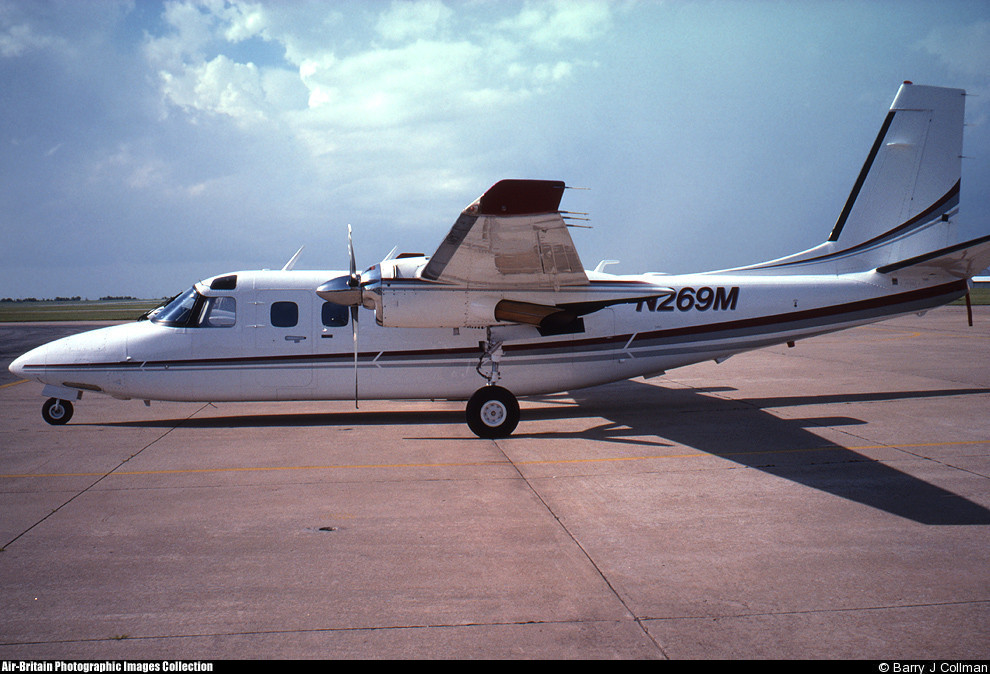
Crash of a Cessna 404 Titan II in Boca Raton
Date & Time:
Jan 17, 1990 at 0009 LT
Registration:
N335GP
Survivors:
Yes
Schedule:
Wilmington - Fort Lauderdale
MSN:
404-0009
YOM:
1976
Crew on board:
1
Crew fatalities:
Pax on board:
2
Pax fatalities:
Other fatalities:
Total fatalities:
0
Captain / Total hours on type:
35.00
Aircraft flight hours:
3286
Circumstances:
While level after descending, the right engine quit. Pilot feathered the propeller, advised ATC, and was diverting to alternate when left engine quit. He positioned the left engine boost pump to high and low with negative results, but did not feather the propeller. Position of boost pumps, when engines quit, was not determined. Aircraft landed on overpass that was under construction. There was fuel leakage after accident due to aircraft damage. Fuel quantity was sufficient. Examination of aircraft revealed right engine flexible duct from turbocharger to plenum chamber separated due to loose clamp. Hose was installed and club prop installed for each engine run. Both engines operated normally. Induction air hose was pulled during right engine run. Engine ran rough due to excessive rich mixture. No determination could be made for the reason of the left engine power loss.
Probable cause:
Loss of power in the right engine due to a disconnected duct between the turbocharger and the plenum chamber. The reason for the loss of power in the left engine was not determined.
Final Report:
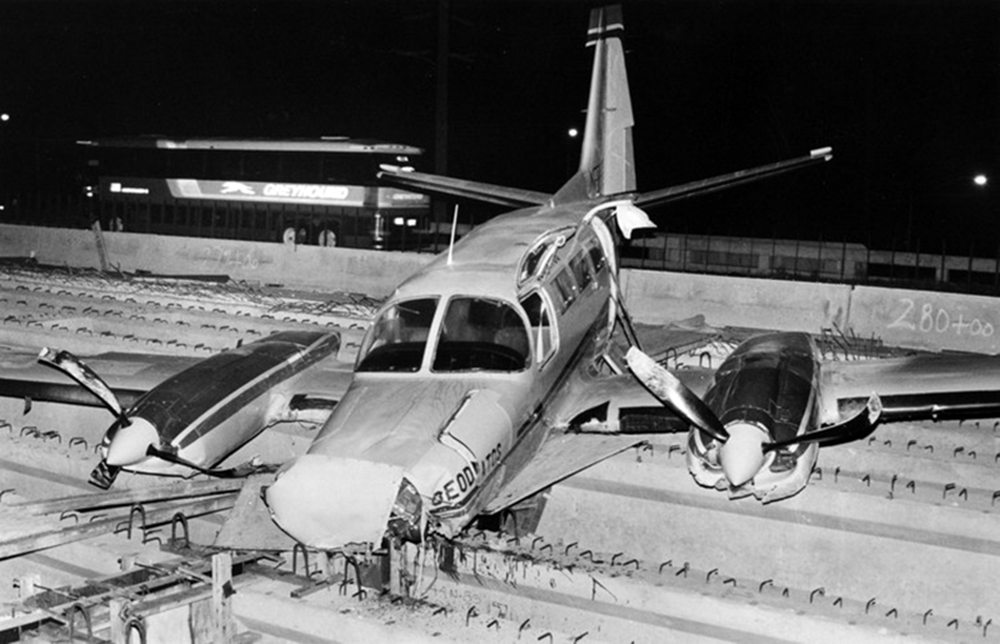

Crash of a Cessna 414A Chancellor in Ashland: 8 killed
Date & Time:
Jan 3, 1982 at 1704 LT
Registration:
N2620L
Survivors:
No
Schedule:
Boca Raton - Ashland
MSN:
414A-0299
YOM:
1979
Crew on board:
1
Crew fatalities:
Pax on board:
7
Pax fatalities:
Other fatalities:
Total fatalities:
8
Captain / Total hours on type:
250.00
Circumstances:
The pilot received two weather briefings, one on the evening before the flight, another at 1009 EST, within three hours of the takeoff time. IFR conditions were forecasted at the uncontrolled, destination airport. The pilot filed an IFR flight plan, but did not list an alternate airport. The aircraft departed Boca Raton at 1257 EST. The flight was uneventful en route and all communications were normal. During arrival, the pilot was cleared for a VOR 3 approach to runway 16. The minimum descent altitude (MDS) for the approach was 800 feet MSL (595 feet AGL) and the minimum visibility was one mile. Several witnesses at and near the airport saw or heard the aircraft. They described the aircraft as crossing the airport from the west side to the east. Those who saw it described it to be approximately 150 to 200 feet AGL, in and out of the clouds. Reportedly, the aircraft then circled and crossed the airport again. Subsequently, it struck an 80 feet tree, then impacted the ground in a steep descent. There was no evidence of failure or malfunction of the airframe or powerplant before impact. The aircraft was estimated to be 46 lbs over the max gross weight limit during impact. All eight occupants were killed.
Probable cause:
In flight collision with terrain during an uncontrolled descent due to improper IFR procedures. The following findings were reported:
- Dusk,
- Low ceiling,
- Fog,
- Rain,
- The pilot continue into known adverse weather,
- Trees,
- Overconfidence in personal ability on part of the pilot.
- Dusk,
- Low ceiling,
- Fog,
- Rain,
- The pilot continue into known adverse weather,
- Trees,
- Overconfidence in personal ability on part of the pilot.
Final Report:
